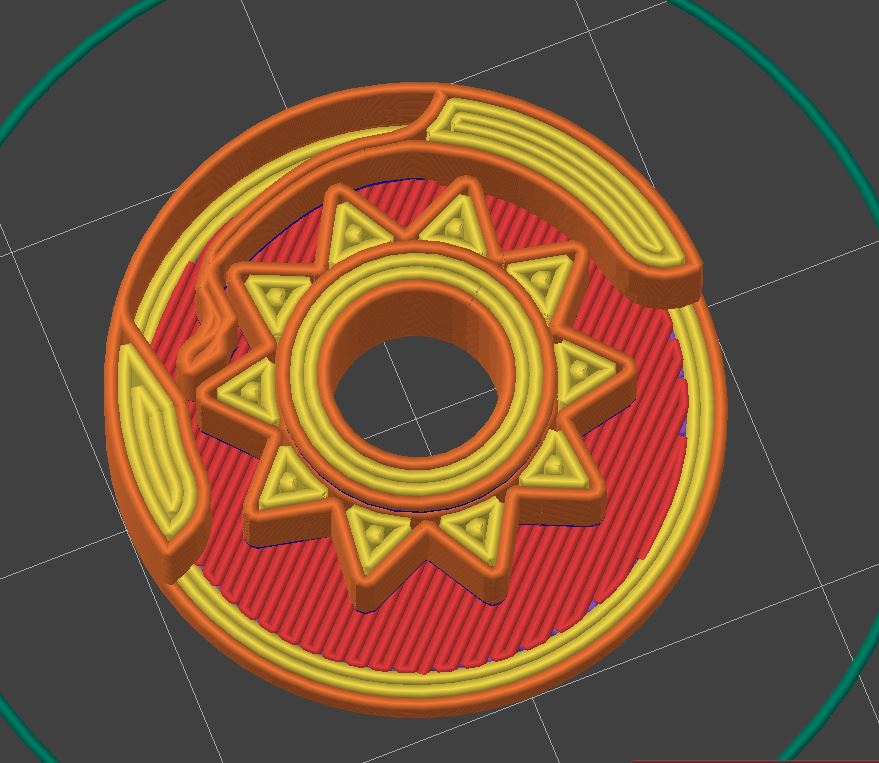3DPrinting
3DPrinting is a place where makers of all skill levels and walks of life can learn about and discuss 3D printing and development of 3D printed parts and devices.
The r/functionalprint community is now located at: !functionalprint@kbin.social or !functionalprint@fedia.io
There are CAD communities available at: !cad@lemmy.world or !freecad@lemmy.ml
Rules
-
No bigotry - including racism, sexism, ableism, homophobia, transphobia, or xenophobia. Code of Conduct.
-
Be respectful, especially when disagreeing. Everyone should feel welcome here.
-
No porn (NSFW prints are acceptable but must be marked NSFW)
-
No Ads / Spamming / Guerrilla Marketing
-
Do not create links to reddit
-
If you see an issue please flag it
-
No guns
-
No injury gore posts
If you need an easy way to host pictures, https://catbox.moe/ may be an option. Be ethical about what you post and donate if you are able or use this a lot. It is just an individual hosting content, not a company. The image embedding syntax for Lemmy is 
Moderation policy: Light, mostly invisible
view the rest of the comments

The teeth is indeed a critical aspect. It has to be symmetrical as this assembly is mirrored to block the rotation in the other direction.
An alternative to this would be printing the spring with the contact surface separately and inserting it into this print (pause at layer height, insert part, continue print) allowing other geometries (that would overlap with the teeth if printed in place) and pretension. The downside is it's a manual task and one more separate part to keep track of.
This is small and the tolerances of the center hub cause the teeths/"gear" to move approx. 0.3-0.5mm of centre. This means what you see in the CAD/slicer isn't how it will look once printed. I had to narrow the gap down as much as I could to get the largest contact area. If you make it a sled on one side there is less material/surface area.
A further consequence is that the tip of it doesn't touch anything as such you could remove the very tip to adjust the sound signature. The feeling is slightly changed but primarily this replaced the high-pitched plastic sound with a deep tone.
The nice aspect is that in the blocking position, it is a solid connection meaning it can take as much load as the teeth (tip) can support (hence the trying to maximize the contact area there). The spring element is only there to return this blocking "bolt" into position after a teeth passes through.
I wish I could see a visual of how it operates, because I'm sure it's something simple about it that I'm not seeing right away.
The thing that I'm having trouble comprehending is how the symmetrical teeth design would be capable of engaging the spring/blocker (pawl?). I mean that the pawl doesn't seem like it will be able to work as a stop; it seems like it would just allow the gears to bypass it regardless of rotation direction. Is this incorrect? I know you said there is a mirrored assembly to block the rotation in the other direction, but that still doesn't help me understand the pawl/teeth engagement quandary that my mind has created.
The sound signature you mentioned is a nice detail that I'm glad you included. I definitely wouldn't have thought of that right away if I was designing something similar.
here you go: https://www.thingiverse.com/thing:6595547 Likely a old version with 0.4mm clearance that does work. If not message me and I could send you a later revision with 0.23mm that definitly works.
How does it work?
one direction: pretty obvious the spring bends out, the teeth pass through the other direction: the spring gets slightly pulled/stretched (the leading tip of the teeth pushes it) which causes the tip to be pushed against the block (left in the picture) and blocking the mechanism.
In other words, this mechanism works by having a physical path for the compression of the spring but in the opposite direction when would need to stretch to move pass the teeth it is stopped by a wall/block.